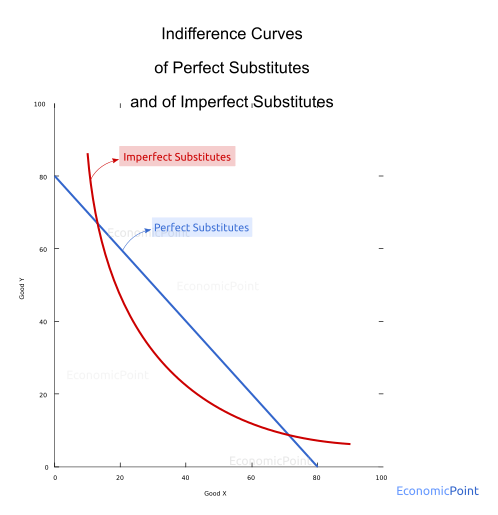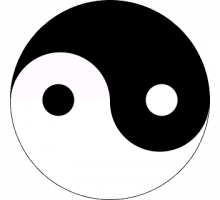Definition of Substitute Goods
Substitute goods are those goods that can satisfy the same necessity, they can be used for the same end.
Examples of Substitute Goods
- Coca-cola and Pepsi
- Car, motorbike, bike and public transport
- Butter and margarine
- Tea and coffee
- Bananas and Apples
- Cigarettes and e-cigarettes
Cross Elasticity of Demand of Substitute Goods
Cross elasticity is the percentage change in quantity demanded for a good that occurs in response to a percentage change in price of anther good:
eAB = (ΔQA/QA)/(ΔPB/PB)
In the case of substitute goods, the cross elasticity is positive:
If the price of a substitute good increases, the demand of the second good will increase. For example: if the price of Coca-Cola increases, some people will buy Pepsi instead.
Graphical Analysis

Strong vs Weak Substitute Goods
Perfect Substitute Goods
Perfect Substitute Goods are those goods that can satisfy the same necessity in exactly the same way. For example:
- A one-dollar bill is a perfect substitute with another one-dollar bill.
- Soybeans that are of the same quality. The same applies for several commodities.
- Electricity
The Indifference Curve of perfect substitute goods has no convexity:

Perfect substitute goods have a constant marginal rate of substitution instead of decreasing marginal rate of substitution.
The cross elasticity of demand of perfect substitute goods tends to positive infinity.
Close Substitute Goods
Close substitute good have a high cross-elasticity of demand. Examples of close substitute goods are:
- Margarine and Butter
- Pepsi and Coca-Cola
- Windows, Mac and Linux
Weak Substitute Goods
Weak substitute goods have low cross elasticity of demand.



